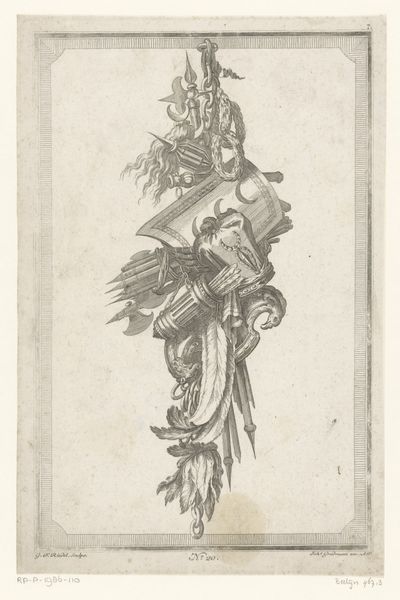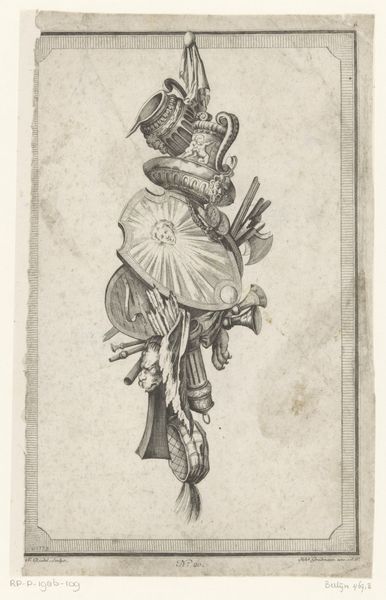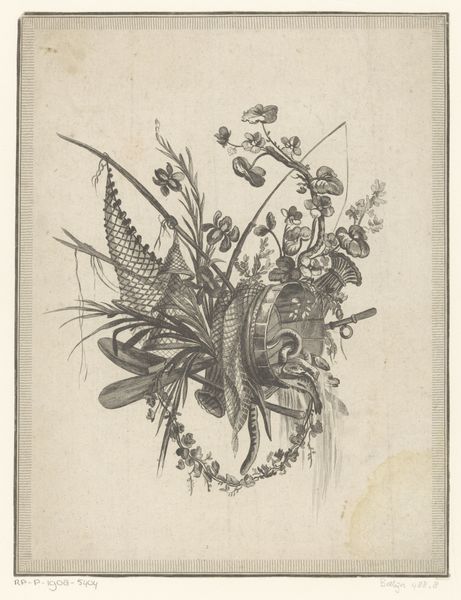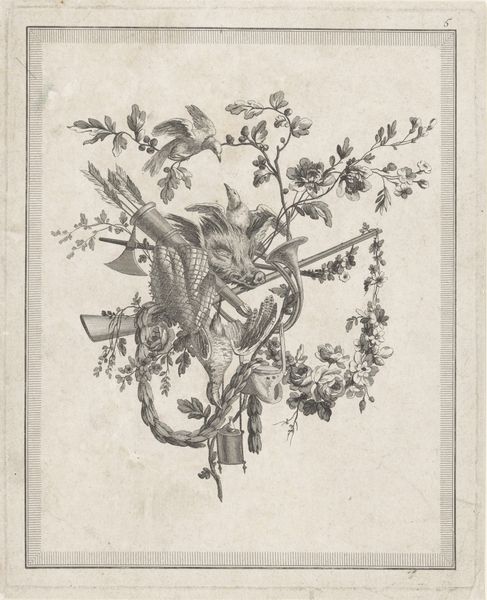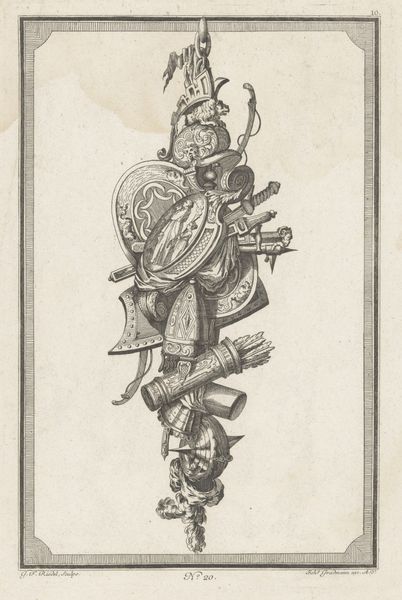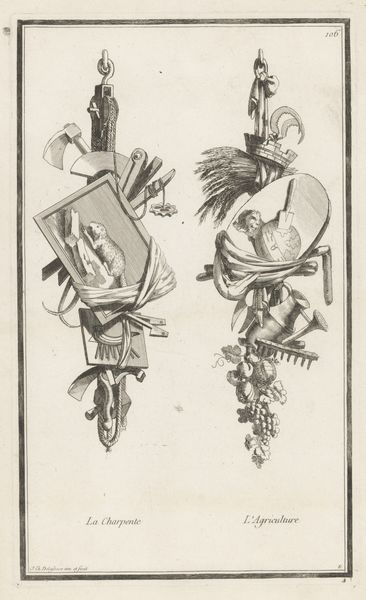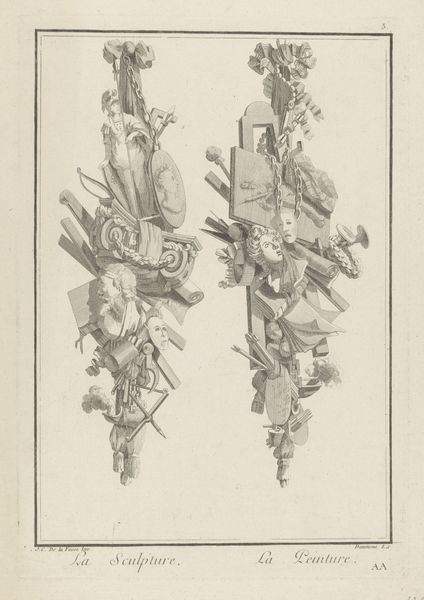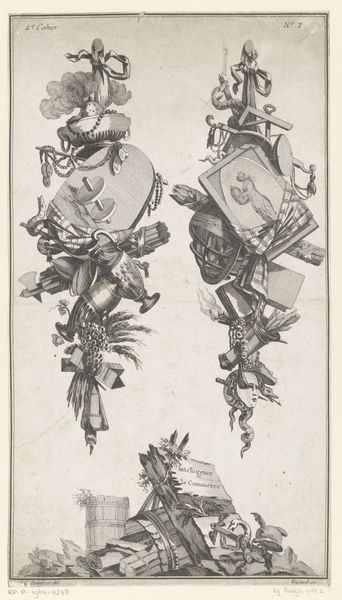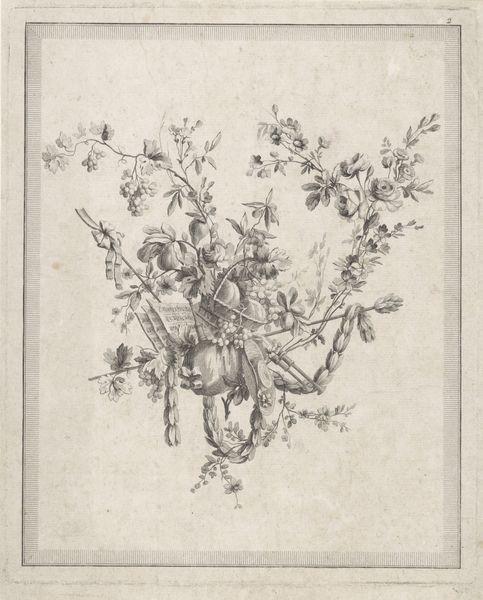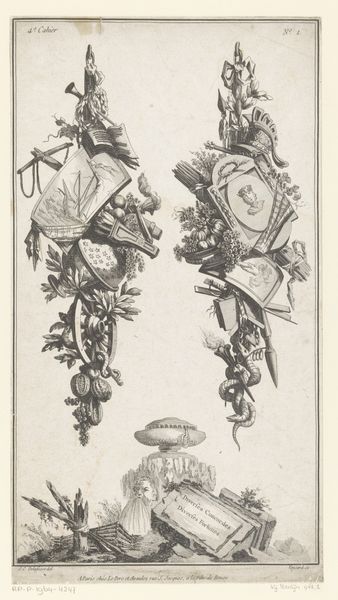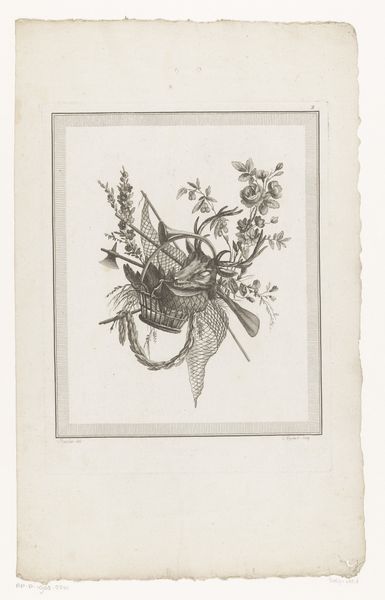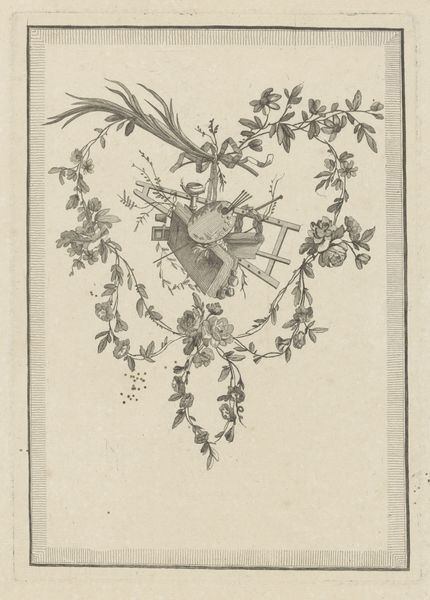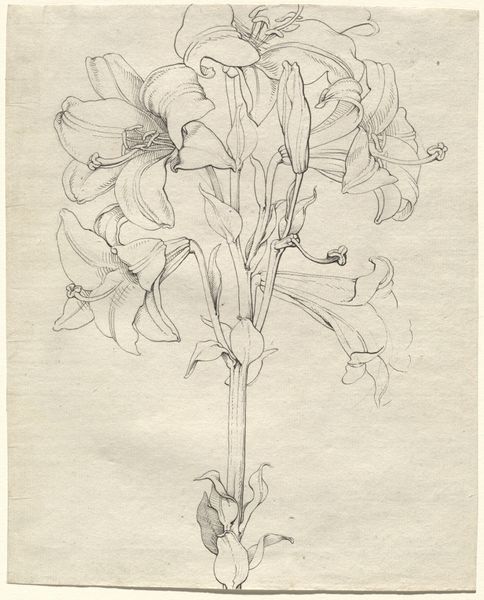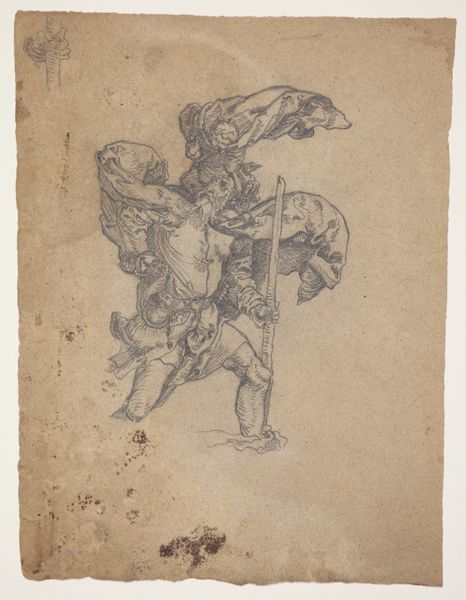
drawing, pen, engraving
#
drawing
#
neoclacissism
#
pen sketch
#
pencil sketch
#
old engraving style
#
pen-ink sketch
#
pen
#
academic-art
#
engraving
Dimensions: height 281 mm, width 184 mm
Copyright: Rijks Museum: Open Domain
Editor: This is "Trofee met adelaar, vaas en helm" (Trophy with eagle, vase, and helmet), a pen and engraving from 1779 by Gottlieb Friedrich Riedel, housed right here at the Rijksmuseum. The sheer amount of detail crammed into a fairly small space is what strikes me first. What visual elements jump out to you? Curator: The layering of forms is quite deliberate. Note how the artist has used contrasting textures – the smooth surface of the vase versus the feathered texture of the eagle, for example – to create depth and visual interest. What compositional devices can you identify? Editor: I can see the repetition of curved shapes like the vase, helmet and laurel leaves, and the vertical stacking of all those trophies that suggest an upward movement. Is this an example of academic art because it uses only those neoclassical motifs? Curator: Precisely. The composition hinges on establishing relationships between these classical objects through their forms. Are the lines simple and balanced to showcase the composition, or is there a different effect here? Editor: The linear qualities are intricate. Everything is linked by line work; even the light and shadows rely on these carefully etched lines to define form. It feels different from later academic paintings. Curator: Agreed. By focusing on these intrinsic visual components, we gain insight into the aesthetic priorities of the artist. A question, though: would the artist and audiences from that period find meaning differently? Editor: Perhaps. They may have understood these emblems in their own way, as a collection of well-known emblems of power. I realize how my interpretation focused only on the work’s aesthetics and structural qualities. Curator: A necessary method, I might add.
Comments
No comments
Be the first to comment and join the conversation on the ultimate creative platform.
